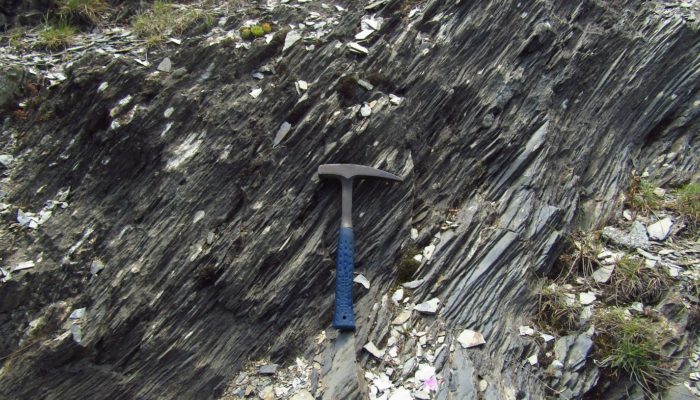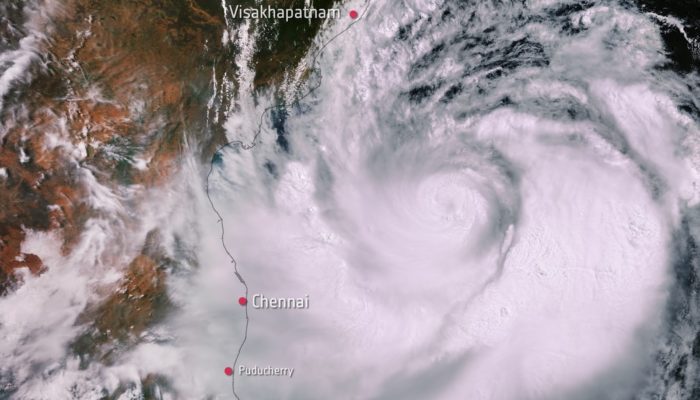The ultimate scope of scientists is to publish their research advancement and share it with the scientific community and civil society. Researchers, whether coming from academia or research institutes, publish their results in peer-reviewed journals, that are usually highly technical and often incomprehensible to anyone except the major experts in the field. In some subjects is inevitable given th ...[Read More]
Tectonics and Structural Geology
Features from the field: Foliation
Have you ever walked on a mountain trail, passing past outcrops of rocks and noticed that many rocks appear to be split along a well-defined orientation? If you have, you might have seen one of the most important structures in metamorphic rocks – called foliation. The term ‘foliation’ derives from the Latin folium, meaning ‘leaf’. A rock with a foliation looks like a pile of R ...[Read More]
Geodynamics
The Sassy Scientist – Science Sweethearts I
Every week, The Sassy Scientist answers a question on geodynamics, related topics, academic life, the universe or anything in between with a healthy dose of sarcasm. Do you have a question for The Sassy Scientist? Submit your question here. Apollo and Artemis ask: What is your opinion on workplace romances? This week’s question just gives me lots of inspiration. This question (in slightly differen ...[Read More]
Geodynamics
Ada Lovelace Workshop 2019
This week (August 25 to August 30), the Ada Lovelace Workshop on Numerical Modelling and Lithosphere Dynamics takes place at La Certosa di Pontignano near Siena, Italy. And the workshop started… how should I put it… electrifying. Literally, because the WIFI device got struck by a lightning bolt and therefore there is (at the time of writing) no internet connection. Can you imagine what this ...[Read More]
Hydrological Sciences
All models are wrong but…
“All models are wrong but some are useful” is a quote you probably have heard if you work in the field of computational hydrology – or ‘hydroinformatics’ – the science (or craft?) of building computer models of hydrological systems. The idea is that, even if these models cannot (by definition!) be a 1:1 representation of reality, their erroneous predictions can still be useful to support decision- ...[Read More]
Seismology
Seismology Job Portal
On this page we regularly update open positions in Seismology. Do you have a job on offer? Contact us at ecs-sm@egu.eu
Geodynamics
The Sassy Scientist – Managing Monsters
Every week, The Sassy Scientist answers a question on geodynamics, related topics, academic life, the universe or anything in between with a healthy dose of sarcasm. Do you have a question for The Sassy Scientist? Submit your question here. Aminta asks: How do you deal with bad co-authors (i.e. people who make writing papers more complicated and unpleasant than it needs to be) that are also senior ...[Read More]
Stratigraphy, Sedimentology and Palaeontology
Investigating the climate history of Central Asia in Kashmir/India
As in most arid areas, dust storms are quite common in India. Repeatedly, the wind carries large quantities of dust from the Thar Desert in the south-west into the Asian country, sometimes across long distances. There have also been dust storms in India in the past, making geoarchives of aeolian dust a suitable recorder of the past local climate- and dust history. When the climate was rather warm ...[Read More]
Geodynamics
Adaption
As temperature records have continuously been broken all over the world, many of us scientist had to endure extreme conditions in our overheated offices. Climate change is happening, and faster than we’d like to think, but how does this play a role in the scientific community? In this week’s blog post, geodynamicist Nicolas Coltice (professor at Ecole Normale Superieure de Paris) share ...[Read More]
Natural Hazards
Cyclone Fani: A success in weather forecast and disaster preparedness
Hurricane, cyclone and typhoon are different terms for the same weather phenomenon: torrential rain and maximum sustained wind speeds (near centre) exceeding 119 km/hour (World Meteorological Organization https://public.wmo.int/en). The terminology depends on the region (e.g. in the western North Pacific, they are called typhoons; in the Bay of Bengal and the Arabian Sea they are named as cyclones ...[Read More]








